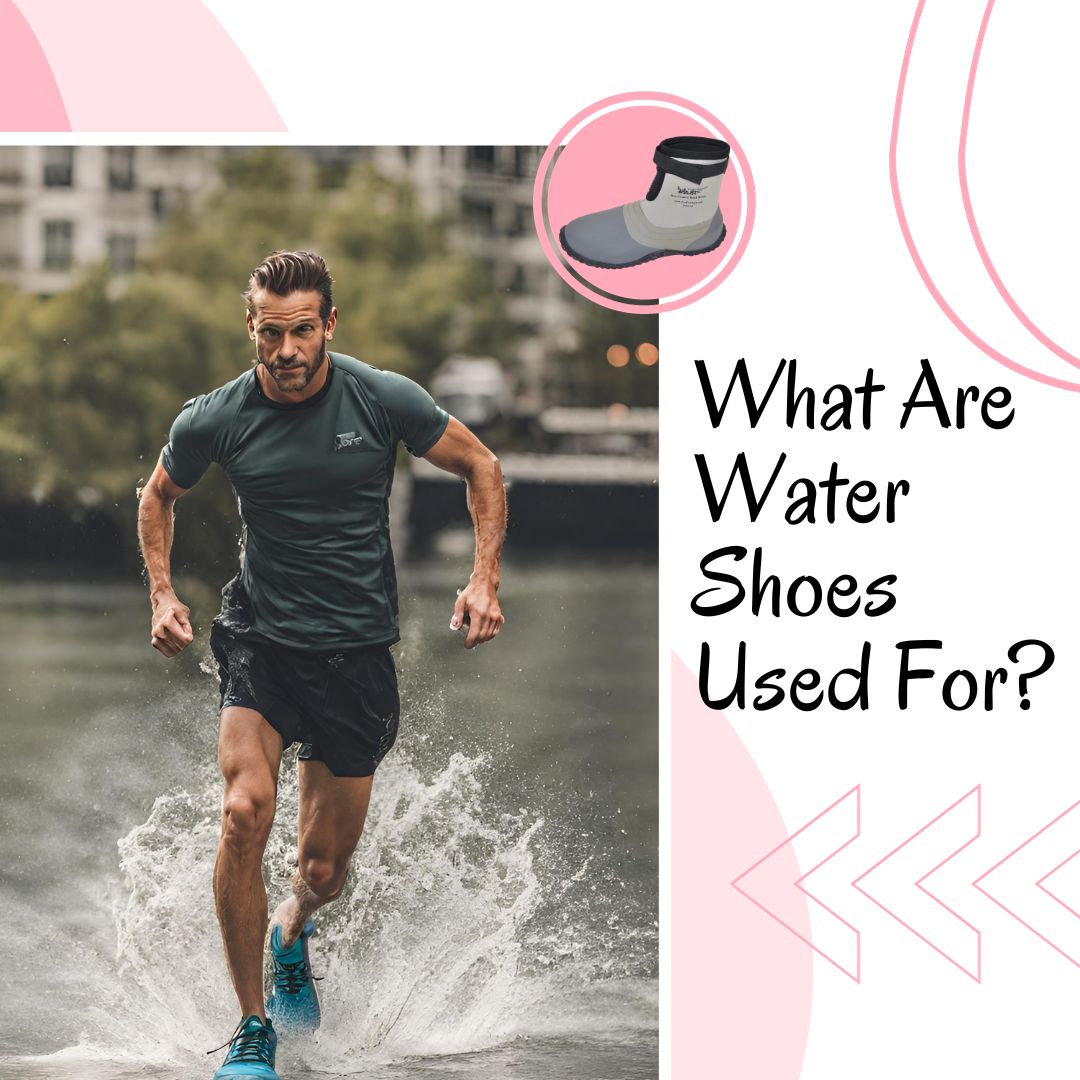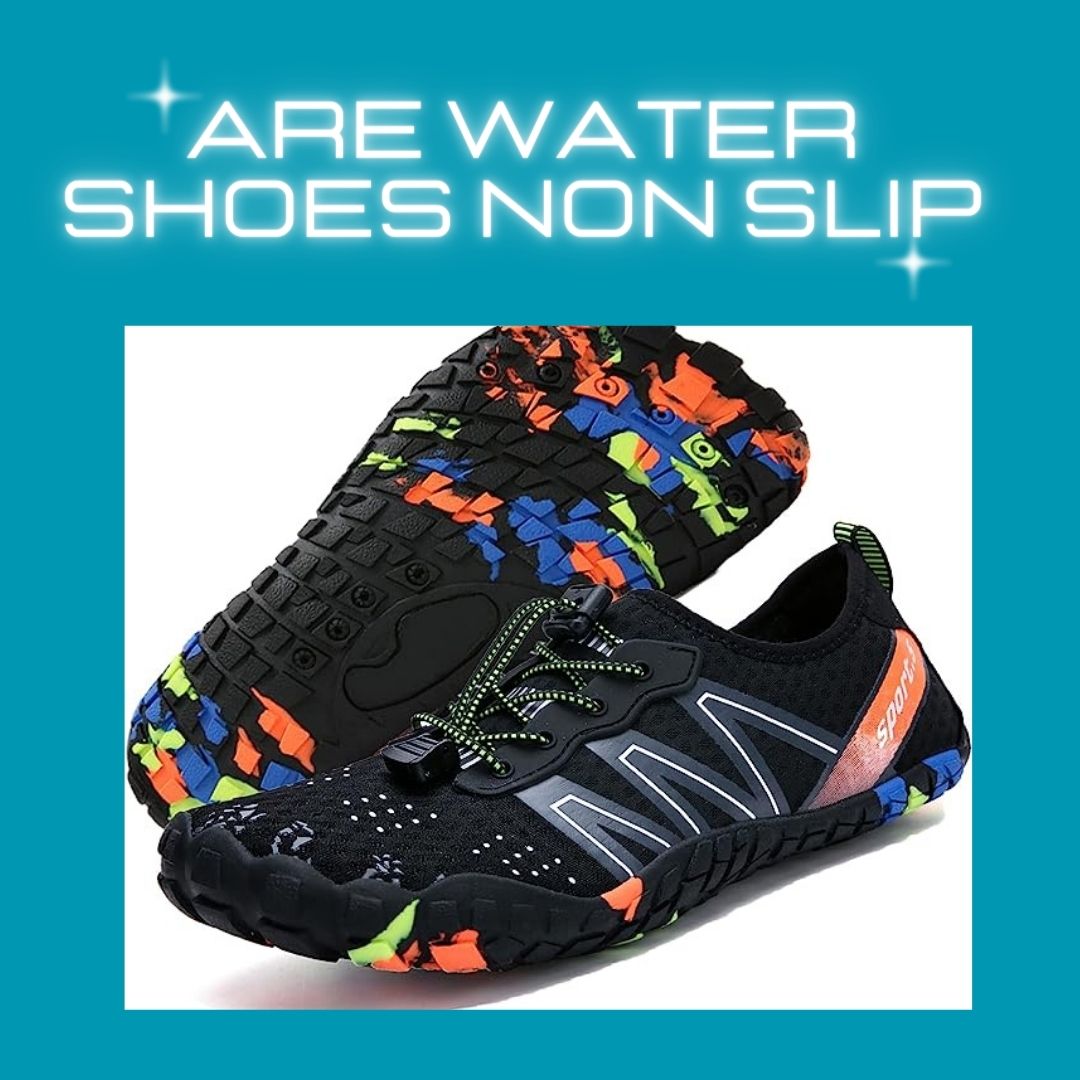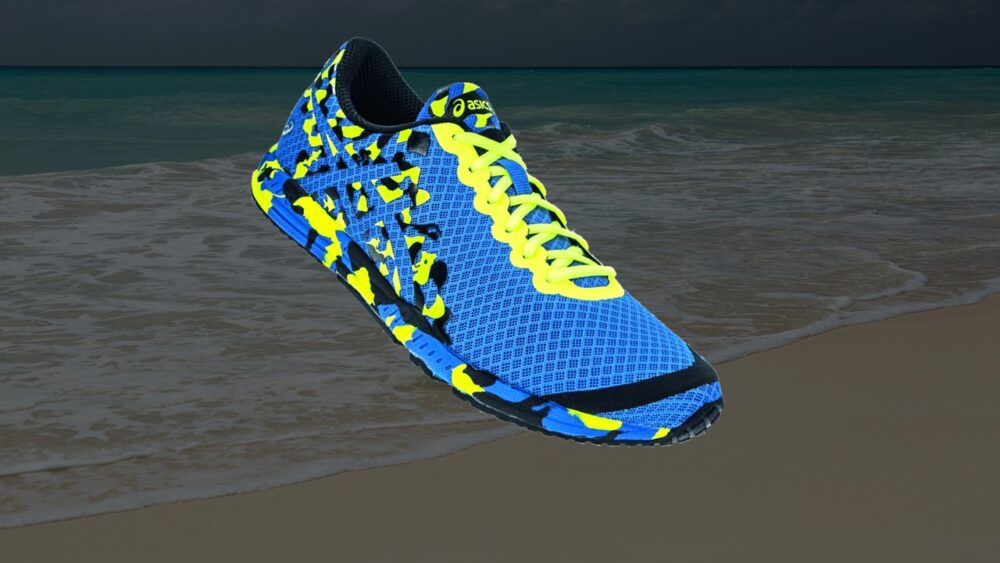Should You Wear Water Shoes In The Ocean? – Dive Into Your Adventure With Expert Insights
Should you wear water shoes in the ocean? Absolutely! Whether you’re a seasoned beach enthusiast or a newbie to the shoreline, the decision to don water shoes in the ocean can significantly impact your coastal experience.
Venturing into the ocean without the protective embrace of water shoes can expose your feet to various risks. These versatile footwear options offer a barrier between your soles and potentially hazardous elements, such as jagged rocks, sharp seashells, and hidden marine life.
Beyond safety, water shoes provide enhanced traction, ensuring you can confidently navigate slippery surfaces. Now, let’s explore the question “Should you wear water shoes in the ocean.”
Should You Wear Water Shoes In The Ocean
Yes, you should wear water shoes in the ocean. If you are planning to go to the beach and enjoy the ocean, you might be wondering if you should wear water shoes or not. Water shoes are specially designed footwear that can protect your feet from sharp objects, slippery surfaces, and hot sand.
They also provide comfort and support for your feet while you swim, surf, or snorkel. But are they really necessary? Here are some factors to consider before you decide to wear water shoes in the ocean.
Why Do You Need Water Shoes In The Ocean
1. Protection
Water shoes offer a protective layer for your feet against potential hazards commonly found in the ocean, such as sharp rocks, seashells, coral reefs, and even small marine creatures like sea urchins. This protection can prevent cuts, bruises, or puncture wounds.
2. Traction
Water shoes are designed with non-slip soles, providing enhanced traction on slippery and uneven surfaces, like wet rocks or seaweed-covered areas. This added grip can help prevent slips and falls.
3. Comfort
Water shoes are generally designed for comfort. They’re lightweight, breathable, and provide a snug fit, allowing you to enjoy your water activities for extended periods without discomfort.
4. Hygiene
Beaches can sometimes be littered with debris or pollutants. Wearing water shoes can keep your feet clean and reduce the risk of exposure to contaminants.
5. Versatility
Water shoes are not limited to ocean activities. They are suitable for a wide range of water sports and outdoor adventures, including kayaking, paddleboarding, snorkeling, and hiking near bodies of water.
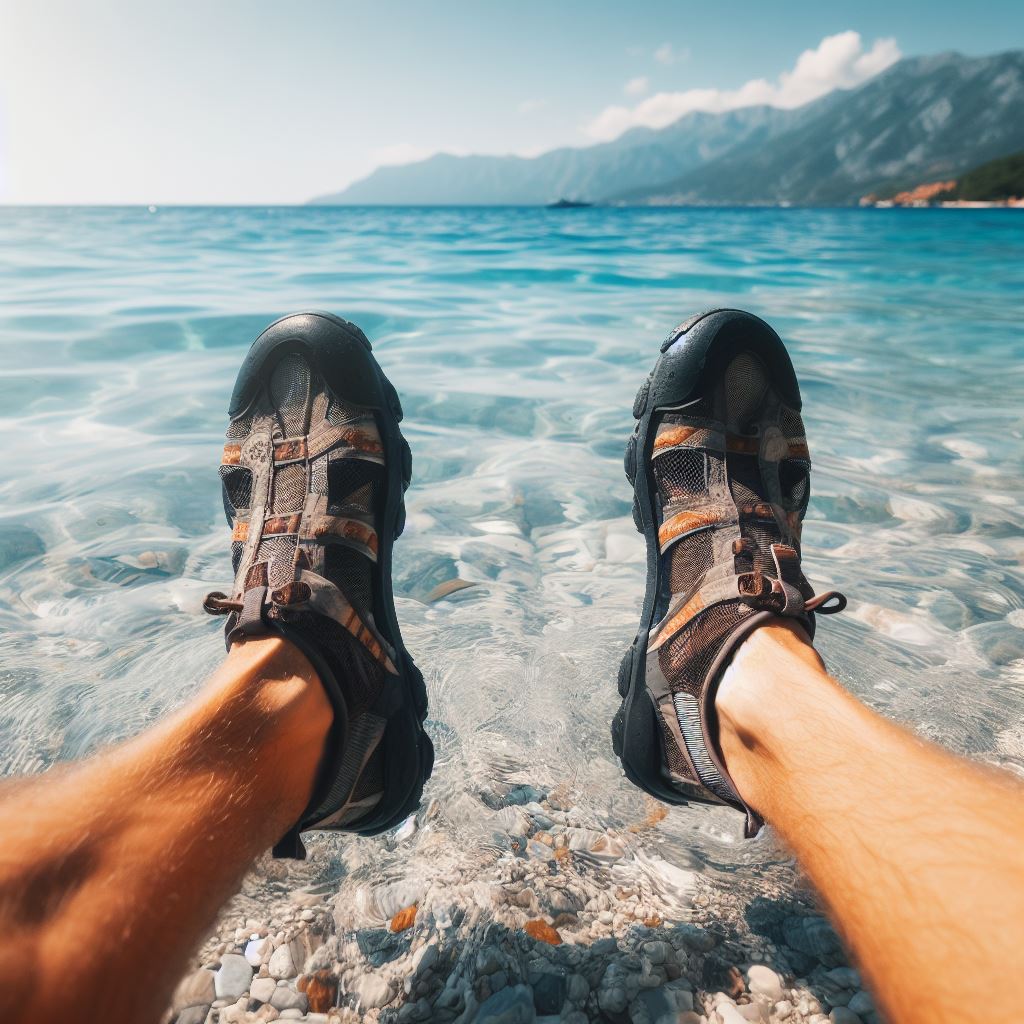
The Best Water Shoes For The Ocean (Should You Wear Water Shoes In The Ocean)
In the world of water shoes, countless options beckon ocean enthusiasts, promising protection, comfort, and functionality. As the tides of choice roll in, our exploration delves into the best water shoes, seeking the ideal blend of features for a seamless oceanic experience.
Together, let’s embark on a journey through the world of water shoes and find the perfect pair to accompany you as you dive into the endless blue.
Product Image | Product Name | Key Features | Rating | Price |
| ||||
| ||||
| ||||
| ||||
| ||||
| ||||
| ||||
| ||||
| ||||
|
Pros And Cons Of Wearing Water Shoes In The Ocean
Pros of Wearing Water Shoes
- Protection: Water shoes offer protection against sharp objects, rocks, coral, seashells, and potential hazards in the ocean. They reduce the risk of cuts, punctures, and abrasions.
- Traction: Water shoes are designed with non-slip soles, providing improved traction on slippery and uneven surfaces. This minimizes the risk of slipping and falling.
- Comfort: Water shoes are typically lightweight, breathable, and designed for comfort. They prevent discomfort and blisters, allowing you to enjoy water activities for longer periods.
- Hygiene: Wearing water shoes keeps your feet clean and reduces the risk of exposure to pollutants, debris, and contaminants commonly found on beaches.
- Versatility: Water shoes are suitable for a wide range of water-related activities, such as swimming, snorkeling, kayaking, and beach sports. They offer versatile protection and comfort.
- Quick Drying: Water shoes are made from materials that dry quickly, preventing your feet from staying wet and uncomfortable for an extended period.
- Added Warmth: In cooler ocean waters or during early morning or late evening activities, water shoes can provide a degree of insulation, keeping your feet warmer.
Cons of Wearing Water Shoes
- Cost: Quality water shoes can be relatively expensive, and you might need different pairs for different activities, which can add to the overall cost.
- Fit Issues: If not properly fitted, water shoes can cause discomfort or blisters. Finding the right size and fit is crucial.
- Maintenance: Water shoes need regular cleaning and care to prevent odors, mold, or bacterial growth. Neglecting maintenance can lead to hygiene issues.
- Sensitivity: Some individuals prefer the natural feel of the ocean on their bare feet and find water shoes less enjoyable for certain activities like swimming or sunbathing on the beach.
- Potential Sand Trapping: Sand can sometimes get trapped in water shoes, which can be uncomfortable and require periodic removal.
- Style Limitations: Water shoes are primarily designed for function over style, so they might not be the most fashionable choice.
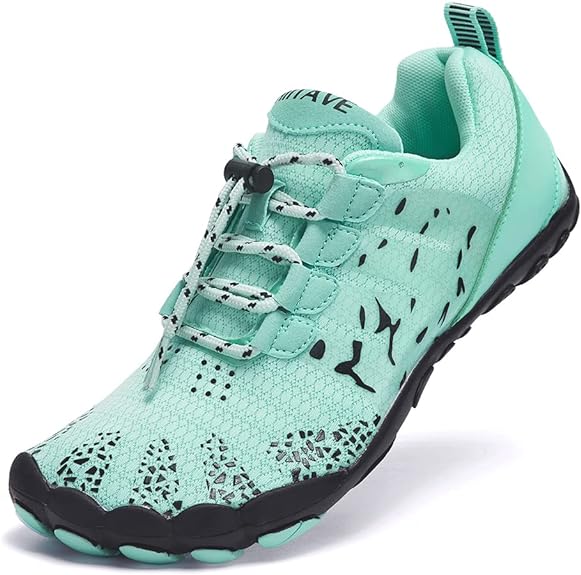
How To Choose The Right Water Shoes For The Ocean (Should You Wear Water Shoes In The Ocean)
Selecting the right water shoes for your ocean-related activities is essential to ensure comfort, safety, and performance. Here’s a step-by-step guide on how to choose the right water shoes for your specific needs:
1. Identify Your Activities
Consider the specific activities you’ll be doing in the ocean, such as swimming, snorkeling, kayaking, or exploring rocky shorelines. Different activities may require different types of water shoes.
2. Understand Your Environment
Assess the conditions of the ocean environment you’ll be in. Are there sharp rocks, coral reefs, or other potential hazards? Knowing the environment will help you choose the level of protection you need.
3. Determine Your Fit
Proper fit is crucial for water shoes. They should fit snugly but not too tight. Ensure your toes have enough room to move, and your heel is secure in the shoe. The right fit prevents blisters and discomfort.
4. Material Matters
Water shoes are typically made from quick-drying materials like neoprene, mesh, or synthetic fabrics. These materials ensure your shoes won’t stay wet and heavy for extended periods.
5. Drainage Holes
Look for water shoes with drainage holes. These allow water to quickly escape from the shoe, keeping your feet dry and preventing them from becoming waterlogged.
6. Traction
Consider the outsole of the water shoe. It should provide good traction on wet and slippery surfaces to prevent slips and falls. Look for non-slip or rubber soles.
7. Protection Level
If you’ll be in areas with sharp rocks or coral reefs, choose water shoes that offer additional protection in the sole and toe area. Some models come with reinforced layers to guard against cuts and abrasions.
8. Entry and Adjustment
Choose water shoes with easy entry and adjustable features. Slip-on or zip-up styles are convenient, and adjustable straps or laces allow you to customize the fit.
9. Breathability
Adequate breathability is essential to prevent your feet from getting sweaty and uncomfortable. Mesh panels and well-ventilated designs can help keep your feet cool.
10. Arch Support
Consider the level of arch support the shoes offer, especially if you have specific foot support needs. Some water shoes come with built-in arch support for added comfort.
11. Weight
Lighter water shoes are often more comfortable for extended wear. Heavy shoes can tire your feet quickly.
12. Brand and Reviews
Research brands and read reviews from other users to get an idea of the quality and durability of different water shoes. Trusted brands often provide better performance and longevity.
13. Try Before You Buy
If possible, try on the water shoes before purchasing to ensure they fit comfortably and meet your specific needs.
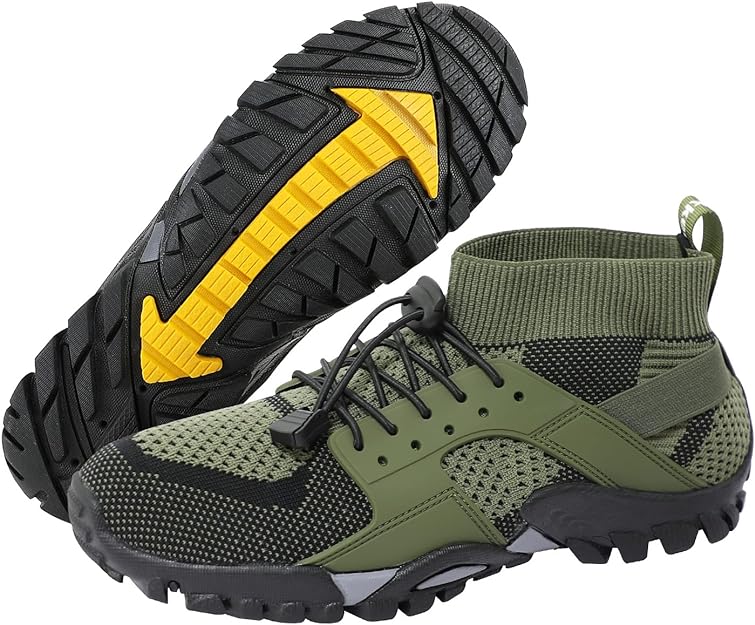
Scenarios Where Water Shoes Are Most Beneficial (Should You Wear Water Shoes In The Ocean)
- Rocky Shorelines: When exploring areas with sharp or uneven rocks, water shoes are crucial to prevent injuries.
- Coral Reefs: Walking on coral can harm both the reef and your feet. Water shoes protect against cuts and scrapes.
- Hot Sand: On beaches with scorching sand, water shoes can keep your feet cool and protected.
- Water Sports: For activities like kayaking, paddleboarding, or snorkeling, water shoes can provide stability and prevent slipping on wet surfaces.
When Water Shoes May Not Be Necessary
Sandy Beaches: On calm, sandy beaches with no apparent hazards, you might prefer to go barefoot or wear flip-flops for comfort.
How To Care For And Maintain Water Shoes (Should You Wear Water Shoes In The Ocean)
Proper care and maintenance of water shoes are essential to ensure their longevity, comfort, and hygiene. Here are some tips on how to care for and maintain your water shoes:
1. Rinse After Use: After each use in saltwater, freshwater, or any other environment, rinse your water shoes thoroughly with clean, fresh water. This helps remove salt, sand, and other debris that can accumulate and cause damage.
2. Air Dry: Allow your water shoes to air dry completely after rinsing. Do not leave them in direct sunlight or near a heat source, as excessive heat can damage the materials.
3. Remove Insoles and Laces: If your water shoes have removable insoles or laces, take them out during the drying process to ensure all parts of the shoe dry thoroughly.
4. Avoid Washing Machines and Dryers: Never machine wash or machine dry your water shoes, as this can damage the materials and affect their performance.
5. Clean Inside and Out: Periodically clean the interior and exterior of your water shoes. Use a mild detergent or a mixture of water and vinegar to clean the inside. Scrub away dirt or salt residue with a soft brush, and rinse thoroughly.
6. Avoid Harsh Chemicals: Do not use harsh chemicals, bleach, or abrasive cleaners on your water shoes, as these can damage the materials and compromise their integrity.
7. Store Properly: Store your water shoes in a cool, dry place when not in use. Avoid leaving them in a hot or damp environment, as this can lead to mold, odors, and deterioration.
8. Inspect for Wear and Tear: Regularly check your water shoes for signs of wear and tear, such as holes, loose stitching, or delamination. Address any issues promptly to prevent further damage.
9. Replace Insoles if Necessary: If the insoles of your water shoes are removable and show signs of wear, consider replacing them with new insoles for added comfort and support.
10. Use Odor Control Methods: To prevent odors, consider using odor-control products like shoe deodorizers, or sprinkle baking soda inside your water shoes when not in use.
11. Rotate Shoes: If you use your water shoes frequently, consider having multiple pairs and rotating them. This can extend the life of each pair and allow them to dry completely between uses.
12 Follow Manufacturer Recommendations: Pay attention to any care instructions or recommendations provided by the manufacturer of your water shoes, as these may vary depending on the specific brand and model.
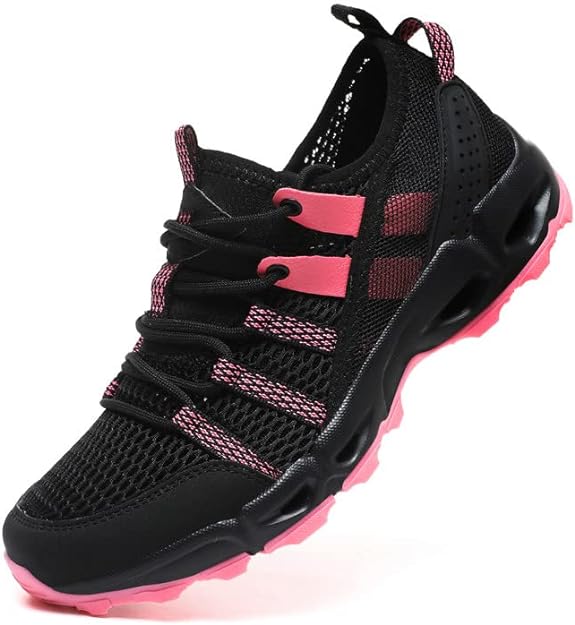
Tips For Using Water Shoes Safely And Effectively (Should You Wear Water Shoes In The Ocean)
Using water shoes safely and effectively can enhance your comfort and safety during water-related activities. Here are some tips to help you make the most of your water shoes:
- Choose the Right Fit: Ensure your water shoes fit snugly but not too tight. They should provide ample support without causing discomfort. A proper fit is essential for safety and comfort.
- Check for Debris: Before putting on your water shoes, inspect the interior for debris or small stones that may have entered. Removing foreign objects prevents discomfort and potential foot injuries.
- Rinse After Use: Rinse your water shoes with fresh water after each use, especially if you’ve been in saltwater. This helps remove salt, sand, and other debris, extending the life of your shoes.
- Dry Thoroughly: Allow your water shoes to air dry completely after rinsing. Avoid direct sunlight and excessive heat, as it can damage the materials. Removing insoles and laces can help with thorough drying.
- Use Proper Traction: Water shoes are designed for better traction, so make use of this feature when navigating slippery or uneven surfaces. Take care not to slip, and be cautious when walking on wet rocks.
- Protect Your Feet: Water shoes provide some protection but may not prevent all injuries. Be mindful of your surroundings, especially when walking on sharp or slippery terrain, and avoid any potentially hazardous areas.
- Avoid High-Impact Activities: While water shoes are suitable for a wide range of water-related activities, they may not provide sufficient support for high-impact activities like running or intense sports. Use appropriate footwear for such activities.
- Clean Your Feet: Before putting on your water shoes, make sure your feet are clean and free from sand or debris. This prevents discomfort and potential foot issues.
- Inspect Regularly: Check your water shoes for signs of wear and tear. Look for holes, loose stitching, or damage to the soles. Replace or repair your water shoes as needed to ensure they continue to provide protection and support.
- Rotate Shoes: If you use your water shoes frequently, consider having multiple pairs and rotating them to extend their lifespan. This also allows them to dry thoroughly between uses.
- Avoid Extended Sun Exposure: Prolonged exposure to direct sunlight or UV radiation can cause fading and damage to the materials of your water shoes. When not in use, store them in a cool, dry place.
- Use Proper Footwear for Snorkeling or Diving: If you’re engaging in snorkeling or diving, use appropriate footwear designed for these activities, such as snorkeling fins or diving booties.
The Bottom Line On Should You Wear Water Shoes In The Ocean
Should You Wear Water Shoes In The Ocean? In the ever-changing world of ocean exploration, one thing remains certain – the right water shoes are your steadfast companions, ensuring safety, comfort, and adventure.
With a range of options to choose from, the quest for the best water shoes has been a voyage of discovery. They offer protection, versatility, and peace of mind, allowing you to savor every step along the shoreline, every plunge into the waves, and every remarkable moment beneath the sun.











